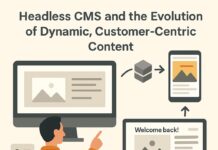Three in five Americans now check their health records online using patient portals. This shows a big change in how healthcare works. Many patients feel frustrated. Their healthcare feels broken up. They can’t easily get their health information. Patient portals fix these problems. They give patients a safe place to see their health data. They can talk to their doctors. They can handle their own care.
What Is A Patient Portal and How Does It Work?
Patient portals are safe websites. They change how patients see and manage their health information. These websites connect patients with their doctors and nurses. Patients get one place to find their health data. Direct communication with the care team becomes possible. Administrative paperwork can be handled independently.
The main benefit is that patients get direct access to their health information. Instead of waiting for phone calls or letters about test results, patients can log in and see their data right away. This change from paper records to digital patient tools is a big shift in healthcare.
Today’s patient portals work with Electronic Health Records (EHR) systems. This means the information patients see is up-to-date and correct. Patients benefit. Doctors benefit. Healthcare organizations rely on specialized digital health software developers to build HIPAA-compliant portals that integrate seamlessly with existing systems. They all get better communication and easier access to data.
What Features Do Patient Portals Offer? Complete Feature List
Today’s patient portals have many features. They help with common patient needs. The most important features focus on getting health information. 90% of portal users look at test results. 70% read doctor’s notes.
Main features include seeing test results, reading doctor’s notes, and scheduling appointments. These features let patients see lab results right away. Portal functionality helps patients understand their health. Appointment scheduling enables patients to manage their care schedule.
Essential Patient Portal Features:
- Health Information Access: See test results (used by 90% of users), doctor’s notes (70%), and medical history
- Appointment Management: Schedule, change, and cancel appointments online
- Safe Messaging: Talk directly with doctors and nurses without playing phone tag
- Medicine Management: Ask for refills and see medication history
- Billing and Insurance: See bills, make payments, and check insurance information
- Mobile App Access: Use on phones and tablets with 50% of users using apps in 2022
- Personal Health Tracking: Watch health numbers, set goals, and track progress
- Family Access: Special accounts for caregivers and family members
How to Implement Patient Portals: Step-by-Step Implementation Guide
To successfully set up patient portals, you need to handle technical, legal, and user adoption challenges. Healthcare IT systems are complex. You need careful planning to make sure everything works together. You need to make sure users are happy.
Technical Integration Requirements
Technical integration is the foundation of successful portal setup. Connecting with existing EHR systems and healthcare workflows needs careful planning. Planning involves data flows, security rules, and user interface design. This integration must keep data safe and accurate. It must give real-time access to patient information.
HIPAA Compliance and Security
HIPAA compliance and privacy protection are required for patient portal setup. Security rules must protect patient data. They must keep the system easy to use. This needs a careful balance between security and accessibility. Multiple security measures keep patient information safe: regular security checks, encryption standards, and access controls.
User Experience and Accessibility
User experience design and accessibility directly affect how many people use the portal. They affect how happy they are. Multiple design elements help patients access portal features easily: intuitive interface design, clear navigation, and responsive layouts that work on all devices. Training and support are needed for both patients and healthcare staff. Good training programs increase use. They reduce support needs.
Data Security and Interoperability
Data security and breach prevention protect against cyber threats. These threats could harm patient information. Interoperability standards and data sharing enable different healthcare systems and providers to share information easily. This improves care coordination. It ensures patients can access all their health information. Pragmatic Coders specializes in developing highly efficient digital health solutions that address these complex integration and security requirements.
What’s Next for Patient Portals? Future Trends and Emerging Technologies
Patient portals are changing. They will offer more connected, smart, and personalized healthcare experiences. These new features will change how patients get care. They represent the next generation of digital health tools. These tools will help patients stay engaged. They will improve health outcomes.
AI and Machine Learning Integration
Artificial intelligence and machine learning will help create personalized health insights. They will help create predictions. These technologies can look at patient data to find health trends. They can predict possible problems. They can give personalized advice for preventive care. AI-powered chatbots and virtual assistants will provide 24/7 patient support. They will answer common questions about health conditions and treatments.
Predictive Analytics and Proactive Monitoring
Predictive analytics and proactive health monitoring will change portals from reactive to proactive healthcare tools. By looking at patient data patterns, portals can find patients at risk for specific conditions. They can suggest preventive measures. This proactive approach improves health outcomes. It reduces healthcare costs through early intervention.
Wearable Device Integration
Wearable device integration and IoT health monitoring will create complete health systems. These systems will track patient health in real-time. Data from fitness trackers, smartwatches, and medical devices will go directly into patient portals. This gives healthcare providers continuous health monitoring data. It helps them make better clinical decisions.
Advanced Telehealth Capabilities
Advanced telehealth capabilities and remote patient monitoring will expand portal features. They will go beyond just information access to active care delivery. Virtual consultations will make portals central to complete healthcare delivery. Remote monitoring of chronic conditions will make portals central to complete healthcare delivery. Telemedicine integration will make portals central to complete healthcare delivery. This is especially helpful for patients in rural areas. It is helpful for patients with mobility problems.
Best Practices for Healthcare Organizations: Patient Portal Implementation Strategy
Healthcare organizations should focus on improving patient portals. They need to meet changing patient expectations. They need to improve care outcomes. The current adoption rates and usage patterns show that portals are no longer optional. They are essential parts of modern healthcare delivery.
Implementation best practices include phased rollout and change management strategies. These strategies handle both technical and human factors. Starting with core features and gradually adding more features lets organizations build user confidence. It helps them manage implementation complexity.
Key Implementation Strategies:
- Phased Rollout: Start with core features and gradually add more features
- Change Management: Prepare both patients and staff for new workflows and capabilities
- Technology Selection: Check platform capabilities, integration requirements, and vendor support
- Patient Engagement: Address barriers including technology anxiety, lack of awareness, and perceived complexity
- Training Programs: Complete education for both patients and healthcare staff
- ROI Measurement: Track number benefits (reduced costs, improved satisfaction) and quality benefits (better communication, enhanced care coordination)
Conclusion
Patient portals have achieved significant adoption. They are becoming essential tools for modern healthcare delivery. They are changing how patients access and manage their health information. The current state of adoption shows their value. 3 in 5 Americans use portals. High engagement rates for core features show their value. They improve healthcare accessibility and patient empowerment.
The future of patient portals lies in their integration with AI, predictive analytics, and complete digital health systems. These will further improve patient care and outcomes. Healthcare organizations should focus on improving their patient portal capabilities. They need to meet changing patient expectations. They need to improve care outcomes. This requires strategic investment in technology. It requires complete training programs. It requires continuous improvement based on patient feedback and usage data.
Resources
- https://www.ncbi.nlm.nih.gov/books/NBK606032/
- https://www.healthit.gov/faq/what-patient-portal
- https://www.brownhealth.org/be-well/your-patient-portal-what-it-and-why-you-should-use-it
- https://trustarc.com/resource/hipaa-compliance-privacy-solutions/
- https://www.asahitechnologies.com/blog/5-exciting-trends-shaping-the-future-of-patient-portals/








